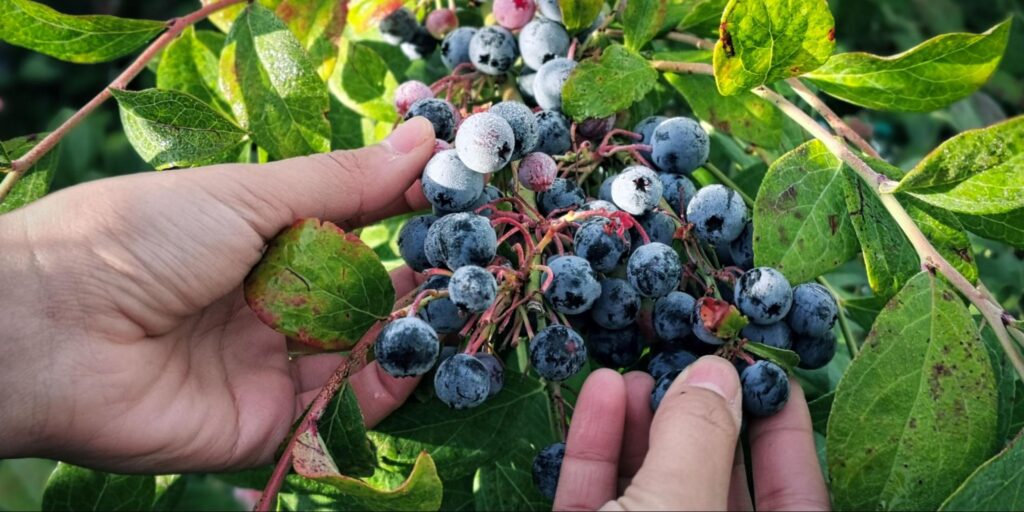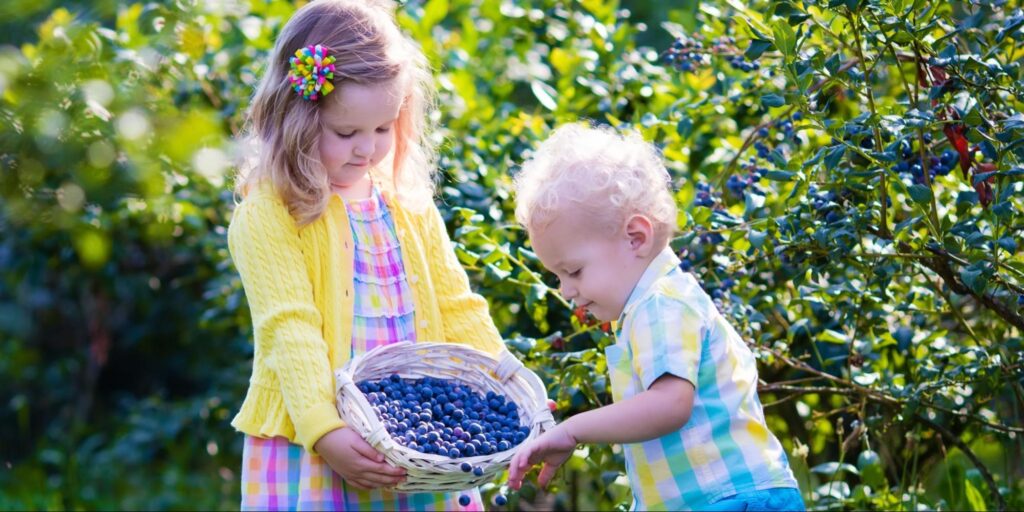Irrigation and Fertigation for Blueberry Orchards 101
Did you know that a single blueberry bush can produce as many as 6,000 blueberries in a year? If this sounds like a lot, remember that the answer lies within proper irrigation and fertigation of the plant.
Naturally, some of the most concerning questions that farmers have are how to increase blueberry yield and how to pick irrigation systems for blueberries.
This article aims to answer these and many other questions about irrigation and fertigation for blueberry orchards because proper irrigation and fertigation are a winning combination for producing healthy, tasty blueberries.
Drip Irrigation Prevents Blueberry Roots from Rotting
Blueberries do not have a deep root system. A shallow root system makes the roots susceptible to rotting. When farmers apply too much water during irrigation, they soon have to deal with rotten roots.
Overwatering the plant reduces the yields and their quality as well. With drip irrigation, farmers do not have to face this issue to such an extent.
Drip emitters will apply only the amount of water necessary for the plant to thrive. Such an approach prevents the roots from being too exposed to water.
Blueberries Have High Evapotranspiration Levels
When it comes to irrigating blueberry orchards, farmers must be familiar with blueberries’ high evapotranspiration levels.
High EC means that blueberries need to be irrigated several times during the week. In summer, farmers should irrigate blueberries even several times a day.
Protecting blueberries from rotting is as important as protecting them from becoming too dry.
A soil-moisture sensor detects when the evapotranspiration levels become too low, and automated irrigation of the plant begins.
Exposing Leaves to Water Is Not Recommended With Blueberries
When answering how to pick irrigation systems for blueberries, farmers need to pay attention to specific features and conditions that blueberries are prone to.
For example, using sprinklers in a blueberry orchard may lead to an increase in leaf diseases. Leaf spots, powdery mildew, and rust can be prevented by not exposing leaves to high humidity levels.
An automated irrigation system will only provide water to the root without endangering other plant parts.

Blueberries Require Low PH Levels
Irrigation and fertilization of blueberries can only be adequate if the soil levels are between 4.5 and 5.5 pH. Blueberries prefer an acid environment and thrive in low pH levels.
Before even planting blueberries, farmers should investigate the pH levels in the soil. Once farmers grow these plants, they should monitor and maintain the pH levels.
PH sensors are an efficient way to measure the pH levels in the soil.
SmartWatering irrigation system connects the pH sensor data to a controller, which further sends the information on iCloud. From iCloud, the information reaches the farmer through an app on their phones.
One of the ways to prevent high pH levels is excellent drainage. An automated irrigation system such as a drip irrigation system helps with this as well as it provides only the amount of water the plant requires.
Blueberries Thrive in Sandy Soils
Irrigation in blueberry orchards becomes effective once their nature is appropriately acknowledged.
Blueberries thrive in sandy soils. But sandy soil tends to soak the water without leaving much to the plant itself.
In combination with shallow roots, this represents a danger to the plant, as it may not receive an adequate amount of water.
Once again, the answer to how to pick irrigation systems for blueberries has a simple solution. Drip irrigation is perfect for irrigating blueberries as the water gets uniformly distributed directly to the plant and not in the soil.
How to Fertilize Blueberries Through Irrigation Systems?
Farmers need to check the soil content and observe the plant to achieve the best fertigation results. Since blueberries prefer an acid environment, fertilizers should be rich in acid.
Fertigation is a term that denotes applying liquid fertilizer. Rather than applying fertilizer once a year, liquid fertilizer is applied once a week in the amount that the plant needs.
Choosing suitable fertilizers is one step, and delivering fertilizer to the plant is the other one.
Rather than applying fertilizers traditionally, farmers should fertilize blueberries through irrigation systems.
Like water, fertilizers can be inadequately applied, thus decreasing the yield potential and reducing earnings for farmers.
Automated irrigation systems will apply the correct fertilizers when the plant needs them.
Monitoring pH levels, soil-moisture levels and observing the plants will lead to efficient fertilization through irrigation systems.

How to Increase Blueberry Yield?
Numerous issues, such as rotting roots, and diseased leaves, are resolved by proper irrigation and adequate fertigation.
When farmers don’t have to deal with leaf diseases, rotting roots, or dried plants thanks to drip irrigation, there are a few things left to do to increase blueberry yields.
Mulch helps increase blueberry yield. Next to fertilization, mulch is a highly efficient way to increase blueberry yields. It functions as a cover coating to the soil and helps it preserve nutrients and water.
Place Drip Lines Close to Plants to Increase Blueberry Yield
When irrigation of blueberries is not adequate, this can postpone reaching maturity for plants and fruit season.
One way to ensure that irrigation will be proper is to install two drip lines instead of one. For maximum benefit and increased yields, farmers should place the drip lines close to the plants.
According to Mark Longstroth, a small fruit educator from Michigan State University Extension, “you want as many emitters close to the plant as possible. Emitter size (determines) how much water it is putting out with the pressure you have. “
Irrigation and Fertigation Are Crucial for Successful Yields
Only when we work side by side with nature can we achieve the best results. Proper irrigation and fertigation are possible with appropriate irrigation systems and irrigation sensors.
Drip irrigation systems have been developed in a way that allows blueberries to receive the right amount of nutrients through fertigation, and moisture, through irrigation.
If you want to increase blueberry yields and improve the quality of the plant, contact us today.



